On the darkest of days, when the worst is worse than imagined, wildland firefighters remain steadfast while rising to meet the threat. They get to work and respond, and when it’s all over, they assess, prepare, and plan to do more. They look for ways to handle it differently, respond better, and act with increased force.
After the smoke clears is the time to listen, learning from experts who have earned their chops through years of battling blazes, identifying what is needed and understanding how gaps can be filled. The process is vital to adapting and responding to future fires with improved response.
One aerial firefighting company in the Pacific Northwest has been doing just that for over six decades by listening, learning and responding. The 62-year-old company has moved roots from Wyoming to Arizona to Washington, growing from one airtanker to a fleet of 15, two staff to nearly 250, quietly focusing on sustainable growth, accountable actions, financial security, and safe culture to ensure resilience and delivery of their commitments.
“We plan for the future, anticipating needs to be ready when the call comes. This year, that plan proved crucial when fire erupted in California in early January. We sent six large aerial firefighting aircraft to the state, our earliest call out in six decades, and the largest Initial Attack response in the country from a private contractor.” shares Chris Niemann, General Manager with Aero-Flite.
“We listened to our agency customers and saw the need coming. To prepare, we committed to a plan of action about five years ago, investing in new modern aircraft types and a year-round response capability while maintaining safe, effective operations.” continues Chris. “What is important is we don’t stop looking ahead, identifying the next challenge, taking tactical steps to move us towards solutions. We listen to what our wildfire partners need. We position ourselves to be ready to respond when they are ready to act.”
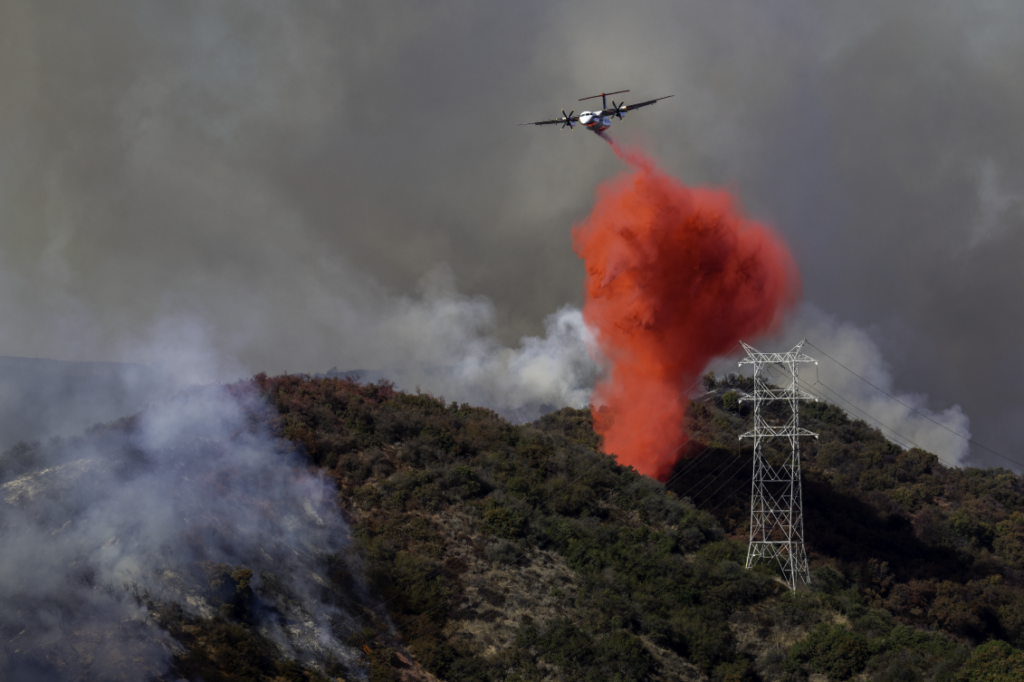
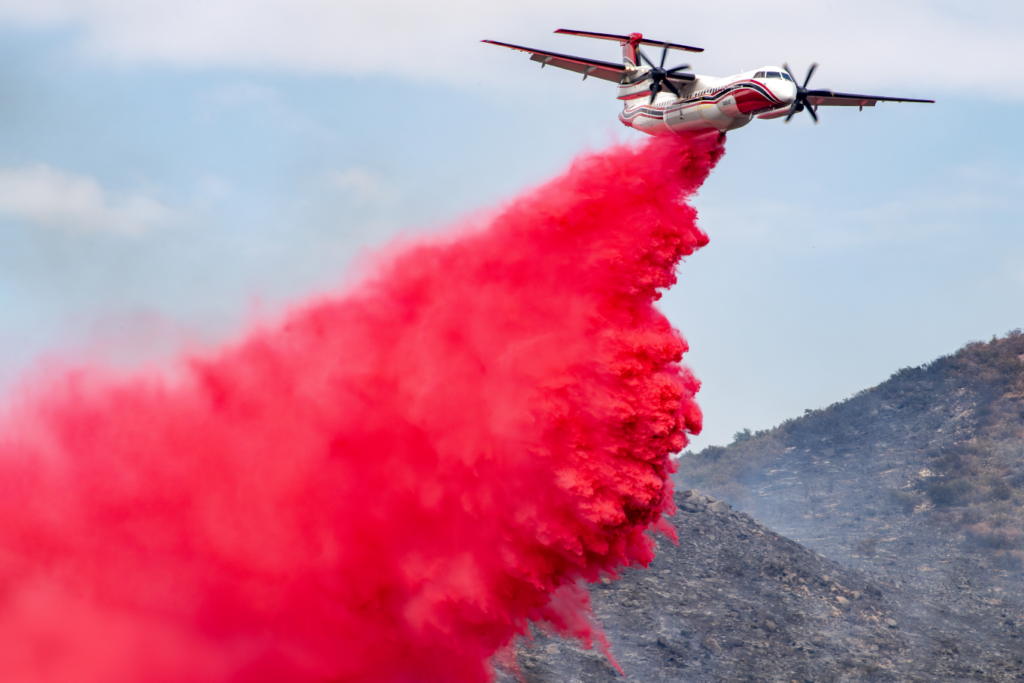
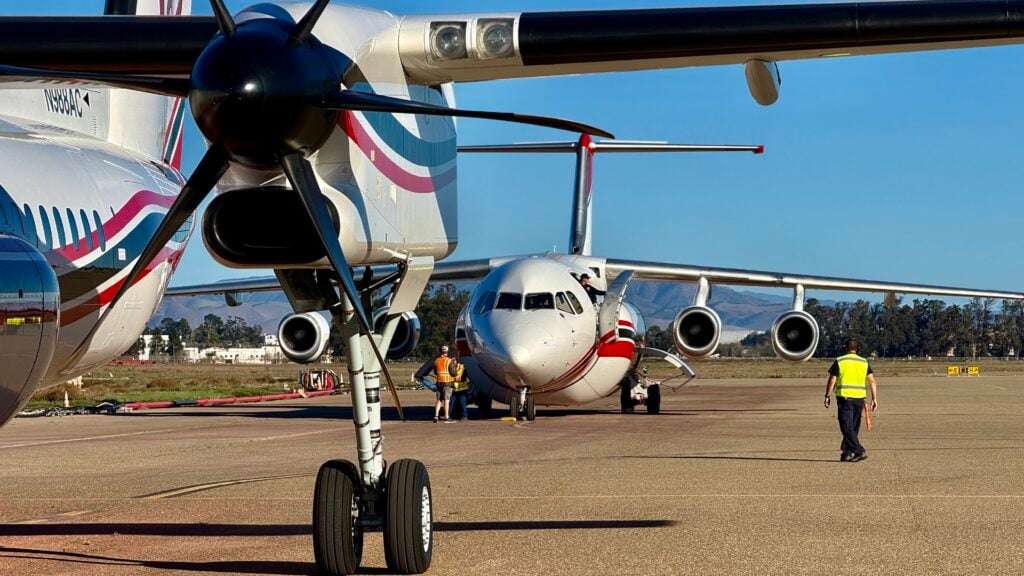
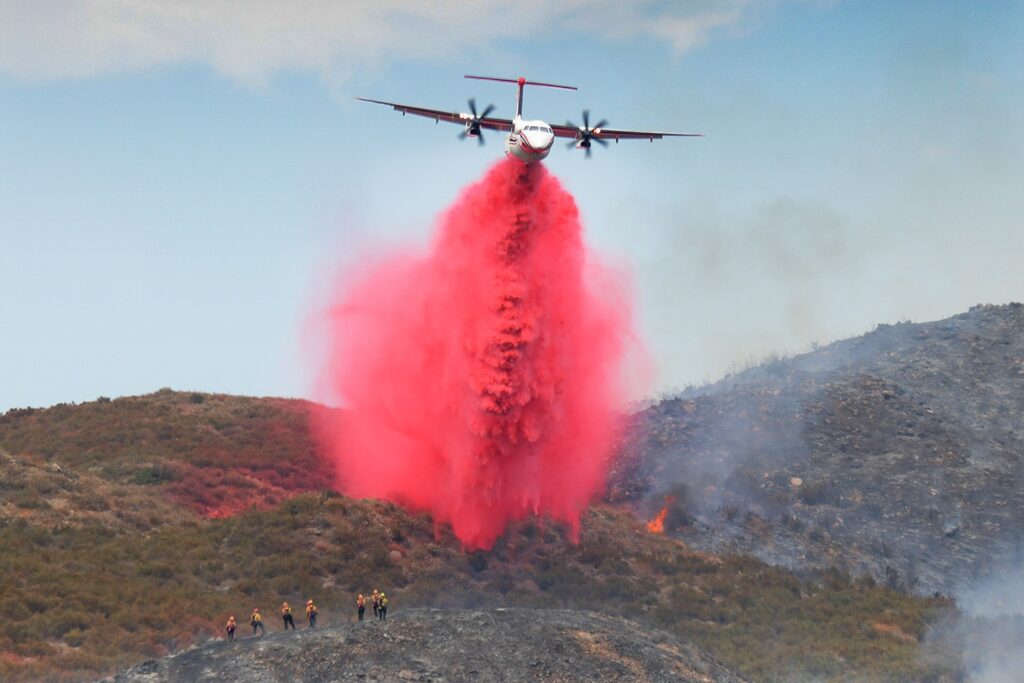
Path to Preparedness
Roland Gray, Assistant Chief Pilot for the most modern airtanker type in the fleet, the Dash 8-400AT fleet, started his 2024 year on March 16th in Abilene, Texas, responding to the Smokehouse Creek Fire, alongside two Aero-Flite RJ85s in Texas and two Aero-Flite CL415s in Oklahoma, all deployed to support firefighters and aerial firefighting partners.
“In the winter, when wildfire response is traditionally quiet, we perform heavy maintenance, taking about four to six weeks on each aircraft, including one to two weeks of Non-Destructive Testing (NDT). NDT is critical in uncovering any structural issues, especially those sub-surface problems which can only be identified using specialized equipment, such as the Eddy Current analysis.” shared Chris. “Our in-house maintenance capability means we can schedule fleet maintenance so aircraft have staggered availability throughout the year, ensuring at least some aircraft are able to respond in December or January if needed in the country. We didn’t expect the early, and significant, need in Texas last year, but we were ready. Now we expect early, sizable call outs, like we experienced this year in California, and we are prepared to assist.”
The Abilene wildfire tanker base, currently operating as a mobile base activated when wildfires break out, is in the process of being turned into a permanent facility for wildfire aircrews. “The Abilene tanker base is one of the bases that stood out last year, along with Santa Maria, California, and Redmond and La Grande, Oregon. Abilene offered efficient retardant loading and a host of operational maintenance and logistic support, plus it’s strategically and centrally located so that we can respond quickly to support any complex fire in the state, or neighboring states. The team there was amazing. A good base can help make missions successful, especially during challenging and stressful fire periods.” Roland shares.
After Texas, Roland performed missions in Washington, Idaho, Montana, California, Utah, and Oregon. “The cluster of fires in Oregon were taxing. We were extremely busy, helping ground crews work to protect lives and property. It was difficult, facing challenging wind and dry, hot conditions in heavily forested, mountainous areas.” adds Roland. “There are so many reasons why I love flying the Dash 8 airtanker, more so than any other tankers I have flown. Beyond its fuel economy, speed, and mission endurance, I would have to say the aircraft's handling and performance are truly amazing. It is an adaptable airtanker that does drop over deserts or grasslands as well as in valleys and mountains. In addition, it can land at higher elevation tanker bases, putting us in a better position for a faster response to remote wildfires. The flight deck is next generation with our unique FEAS (Flight Envelope Advisory System), which helps us avoid flight exceedances during drops, ensuring safe operations.”
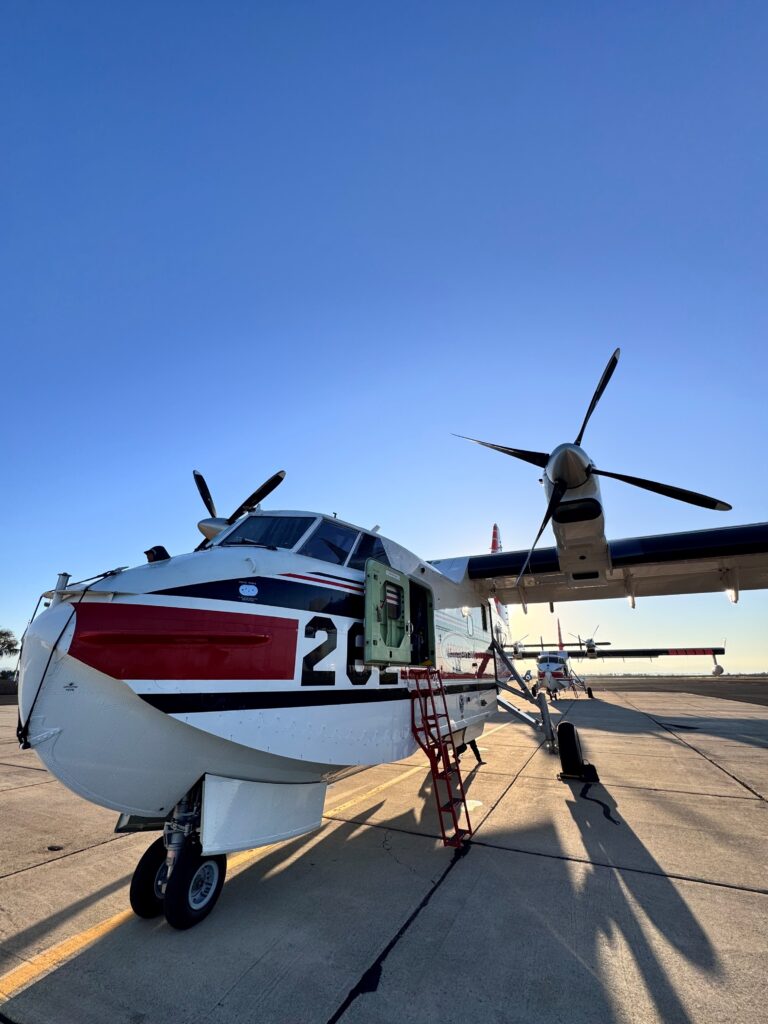
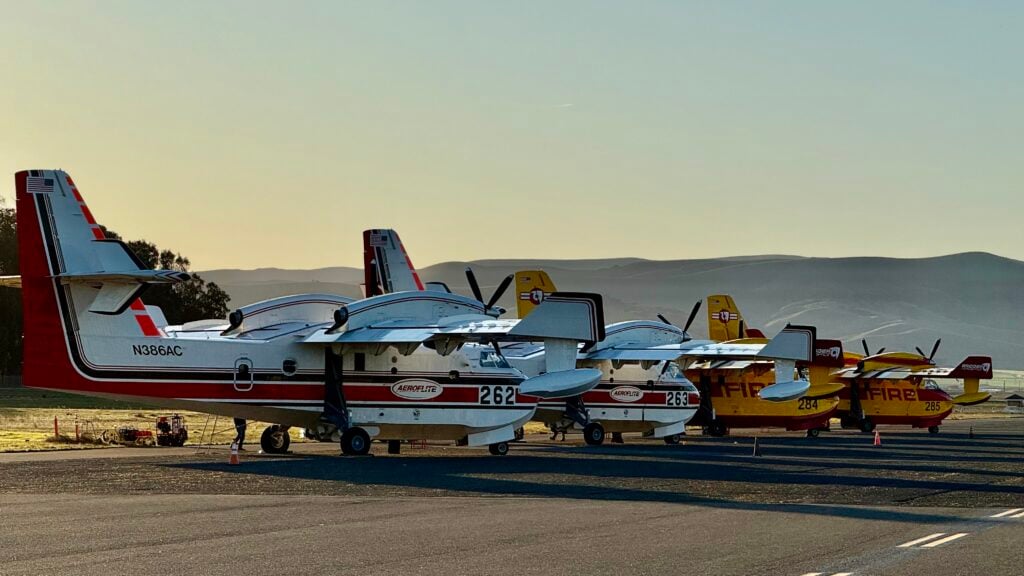
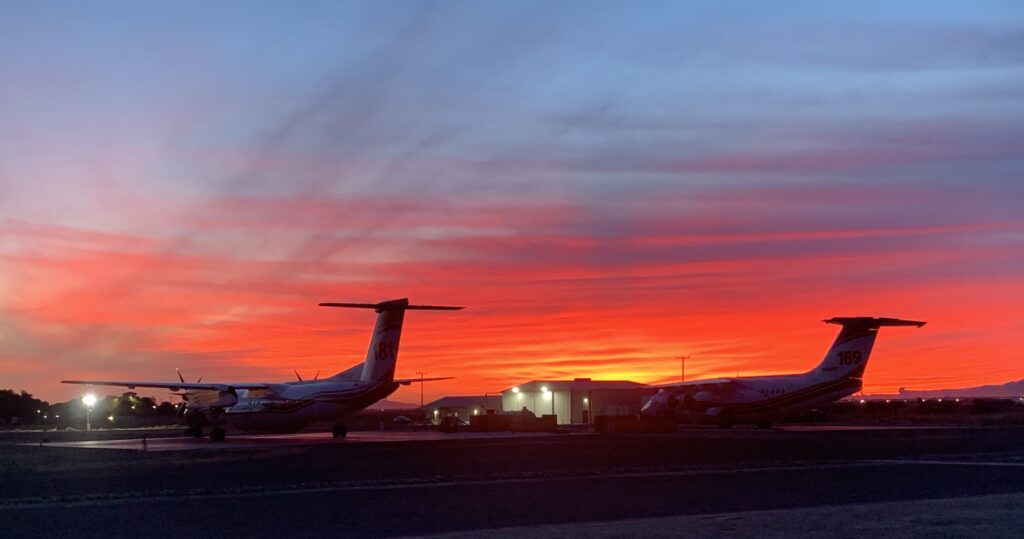
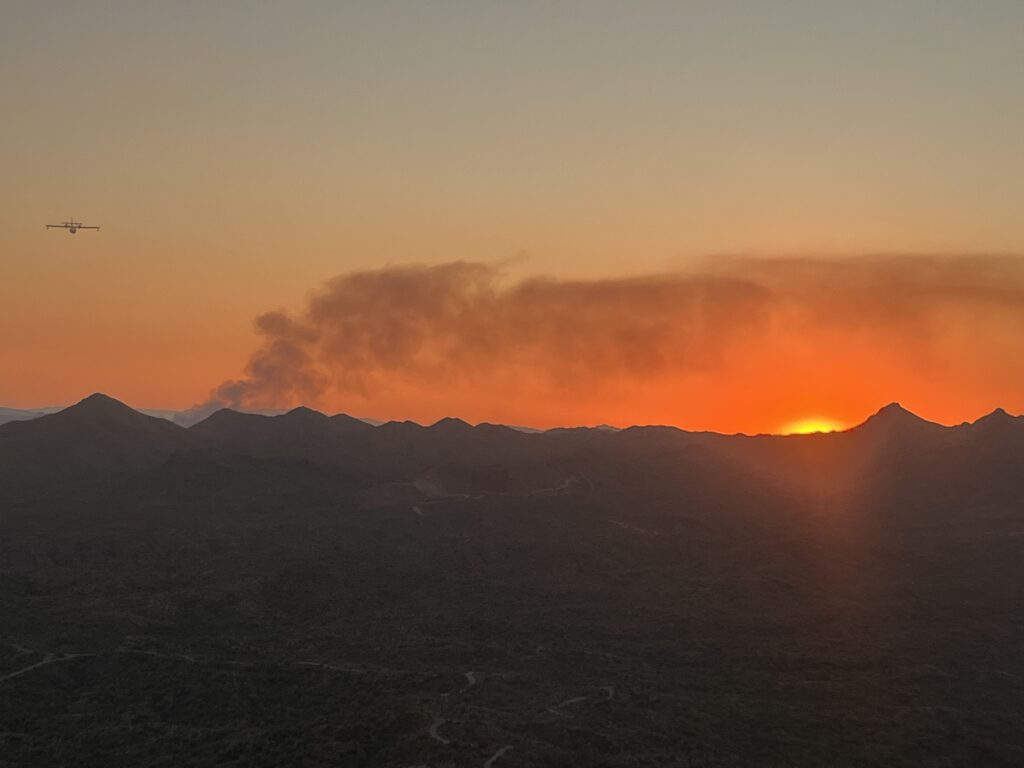
Practice & Respond
Aero-Flite has operated large water scoopers for decades, first operating customer-owned CL215s in the early 2000s before purchasing four new model CL415s in 2014, a fleet that still serves as one of the largest fleets of scoopers in the country. Initial Attack Captain Tracy Zedeck has been flying Aero-Flite’s fleet of CL415 multi-engine water scoopers since 2016. Before becoming an aerial firefighting pilot, Tracy collected a wide range of skills flying in diverse geography and maneuvering various aircraft types. In Colorado, she towed gliders; in Denali National Park, she flew glacier tours; in California, she piloted charters; and, in the Maldives and Croatia, she operated seaplanes. “During the recession in 2009/2010, I returned to school to add an Airframe and Powerplant License to my credentials. During one class, we were shown a video of a Skycrane dropping water over a fire. Seeing that I could combine my passion for aviation with helping others, that’s when I knew aerial firefighting was what I wanted to do.” shares Tracy.
For Tracy, the 2024 season started routinely. In February, she attended recurrent training in Italy in a full-motion CL415 simulator, focusing on instrument proficiency and emergency procedures. In March, she traveled to Chico, California, for Aero-Flite’s recurrent aerial firefighting on-wing training. The team reviewed fire tactics and practiced simulated fire response using Aero-Flite’s fleet there. “We skim and drop over a 1500-acre property, which is set up with smoke generators, dozer lines and fire lines. A large team includes staff to mimic air attack and ground crew communications. It prepares you for the real thing,” shares Tracy. “There is nothing else like this in the country, specific to aerial firefighting.” She began operations in June in Scottsdale, Arizona, and by early July, she had rotated to Wenatchee, Washington.
“This was my most memorable rotation. The season was still slow, and we got off work early and could celebrate the 4th of July as a crew. The hotel was located on the Columbia River, providing a spectacular view of the fireworks and celebration. Unfortunately, the next morning, we woke up to the smell of smoke, and I looked out the window and saw flames on the hillside approaching the town. We knew we’d get straight to work that morning,” shares Tracy. “Leaving the hotel, you could see the concern on staff members' faces as they had to leave their homes, not knowing what the day would bring. The good news was that ground crews were already on the scene protecting some of the neighborhoods. We were able to fly overhead quickly. Since the Columbia River was right there, our turn-around time was very fast. Coincidentally, the water lane we could use to scoop was directly in front of our hotel so the staff could see us work.”
Within a couple of hours, with the help of ground crews, air attack, and helicopters, the fire was contained. “I rarely get to see the relief on the staff's faces when we returned to the hotel that evening. Most of the time, when we fight fire, we’re further out in the wilderness. But this time, it literally hit close to home,” adds Tracy.
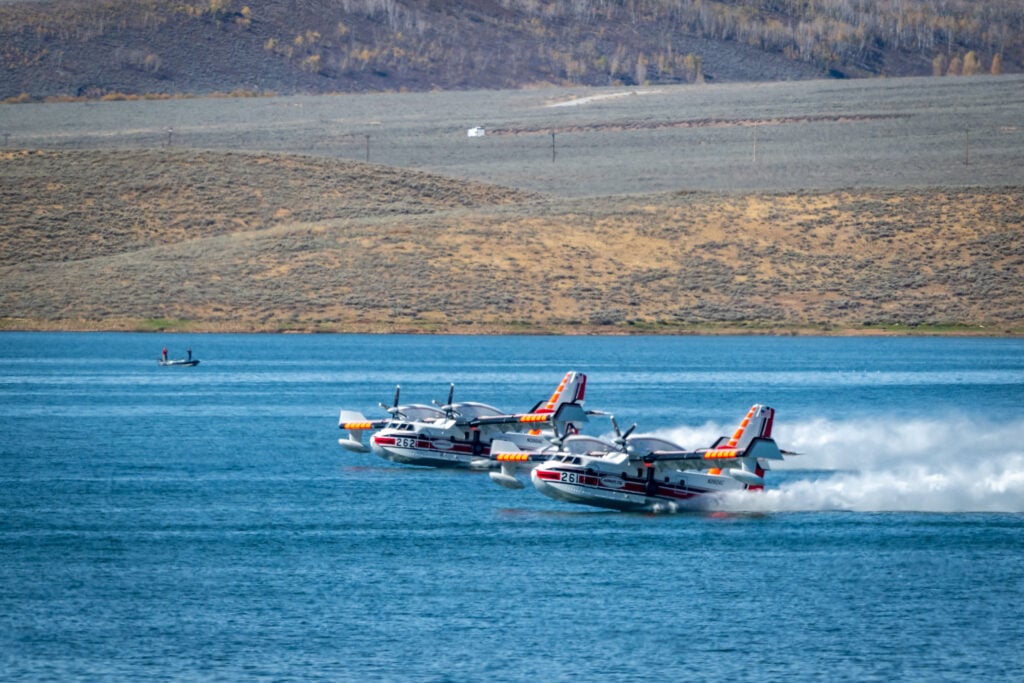
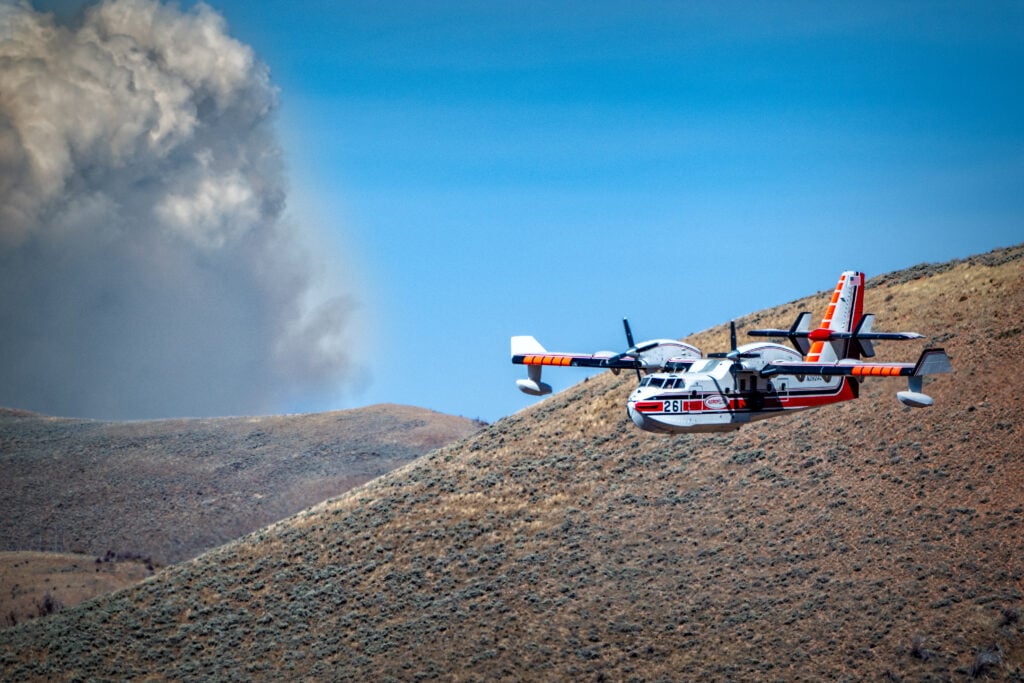
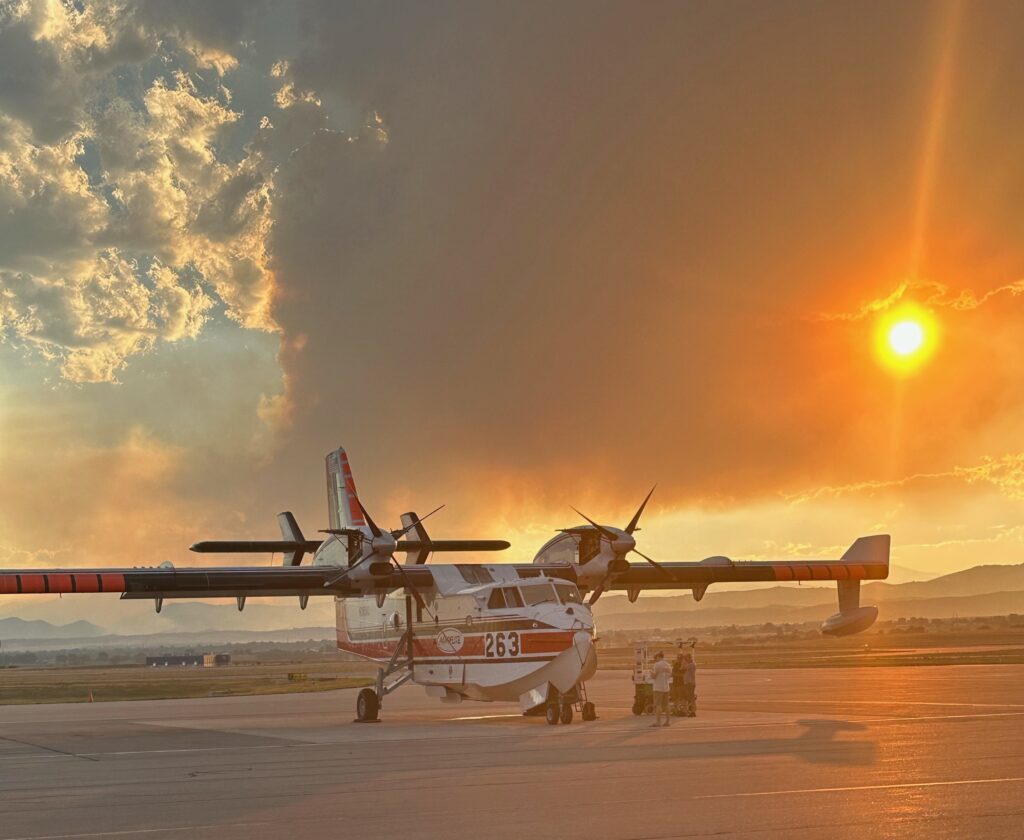
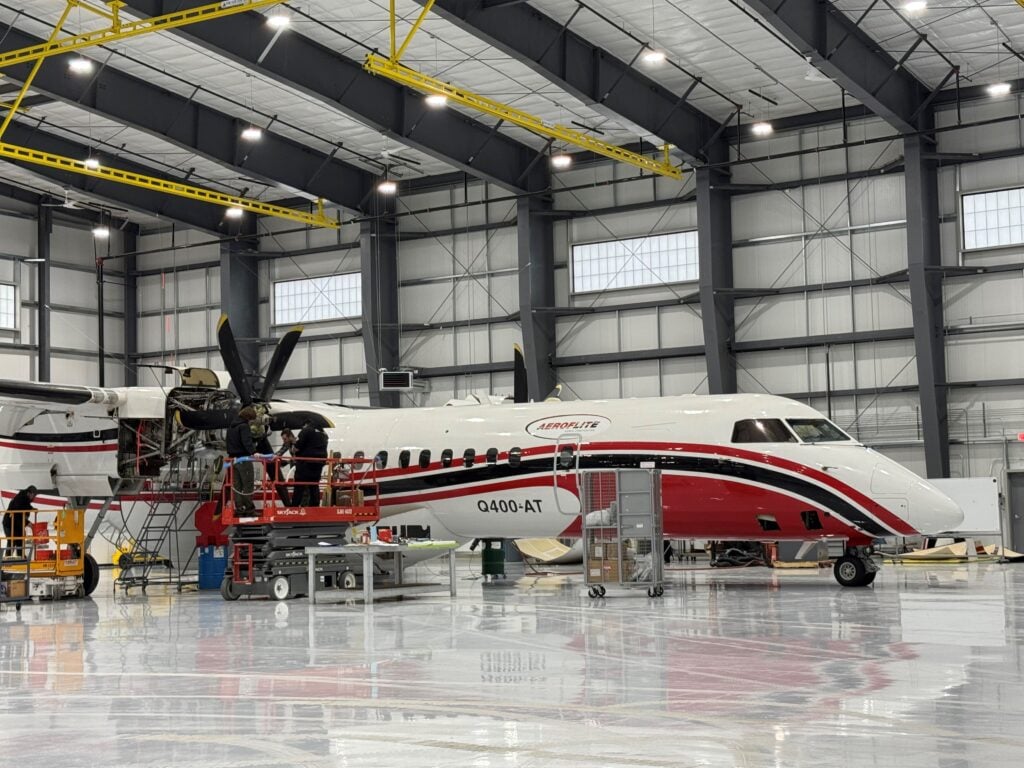
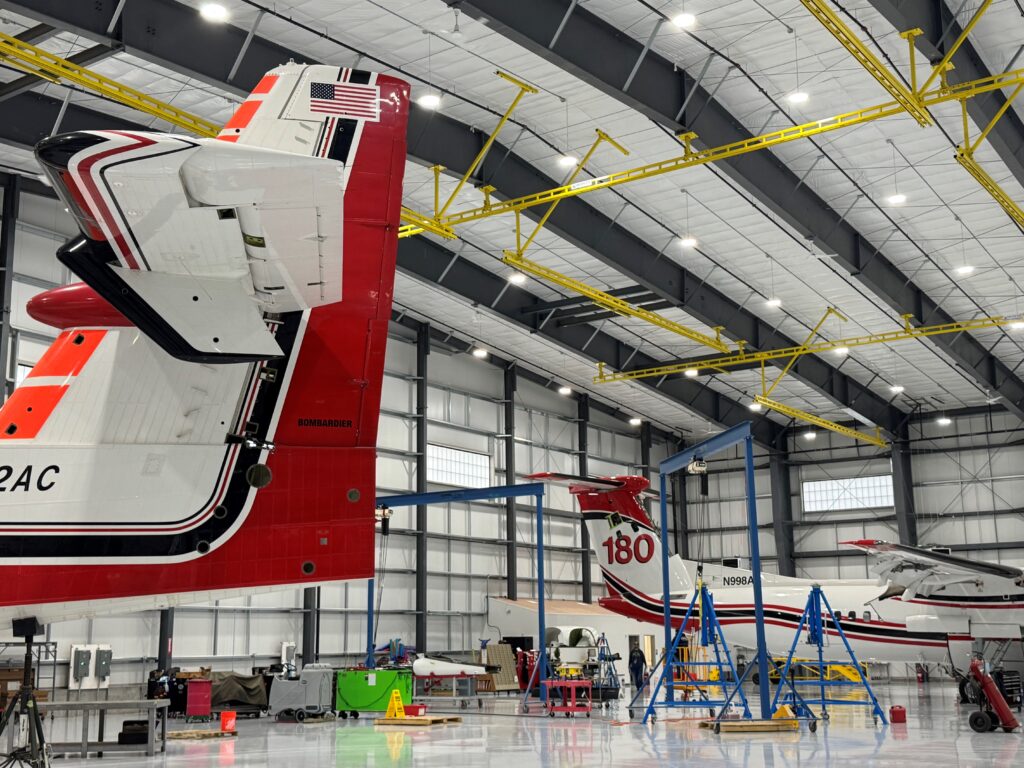
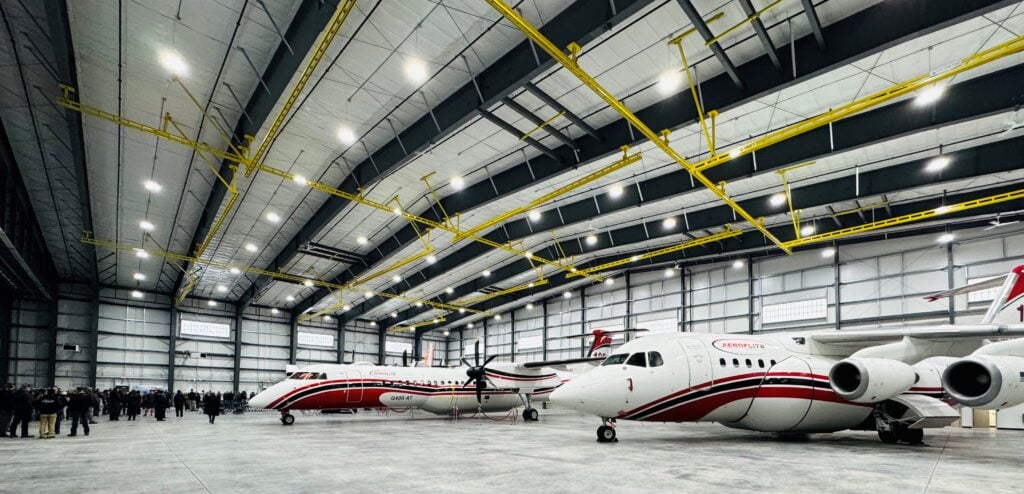
Plan & Provide
After an early start to 2024, the season was slow to end. Tracy finished 2024 in Idaho, Oregon, and Texas, wrapping up in October, with Roland finishing at the end of November in Lancaster, California.
“Our plan by the end of 2024 was to put aircraft through heavy maintenance faster, in order to be able to respond to early season call outs, which happened in Texas, offering year-round response,” shares Chris. “But we will not sacrifice safety for a quicker turnaround, so we expanded our hangars to be able to work on more aircraft at a time. Early in 2024, we added a hangar in Chico, California and opened a new hangar in Spokane, Washington in December, bringing our total hangar space to over 100,000 sq ft.”
Aero-Flite’s hangars are used for more than heavy maintenance. They are strategically located to provide repair facilities throughout the fire season in the western USA. This allows aircraft to be repaired quickly, return to duty, and pre-position closer to where fires occur. In addition, the Chico hangar location is located at an airport that does double duty as an airtanker base, an added benefit for onsite operations.
“Probably most importantly, we expanded our facilities as we are growing our fleet to respond to the agency's need for more and more modern air resources. In January 2025, we accepted two more Dash 8-400AT airtankers to the group, bringing our total fleet size to 15 large aerial firefighting aircraft, including five Dash 8-400ATs.” adds Chris. “We anticipate several states setting up or expanding their airtanker fleets in the near future. Production slots for the Dash 8-400AT are already full through 2026, with recent confirmed orders from other wildfire agencies. Our hangars afford us the ability to expand our fleet further and even consider conversions in the future. Having options creates opportunity, leading to improved wildfire response.”










